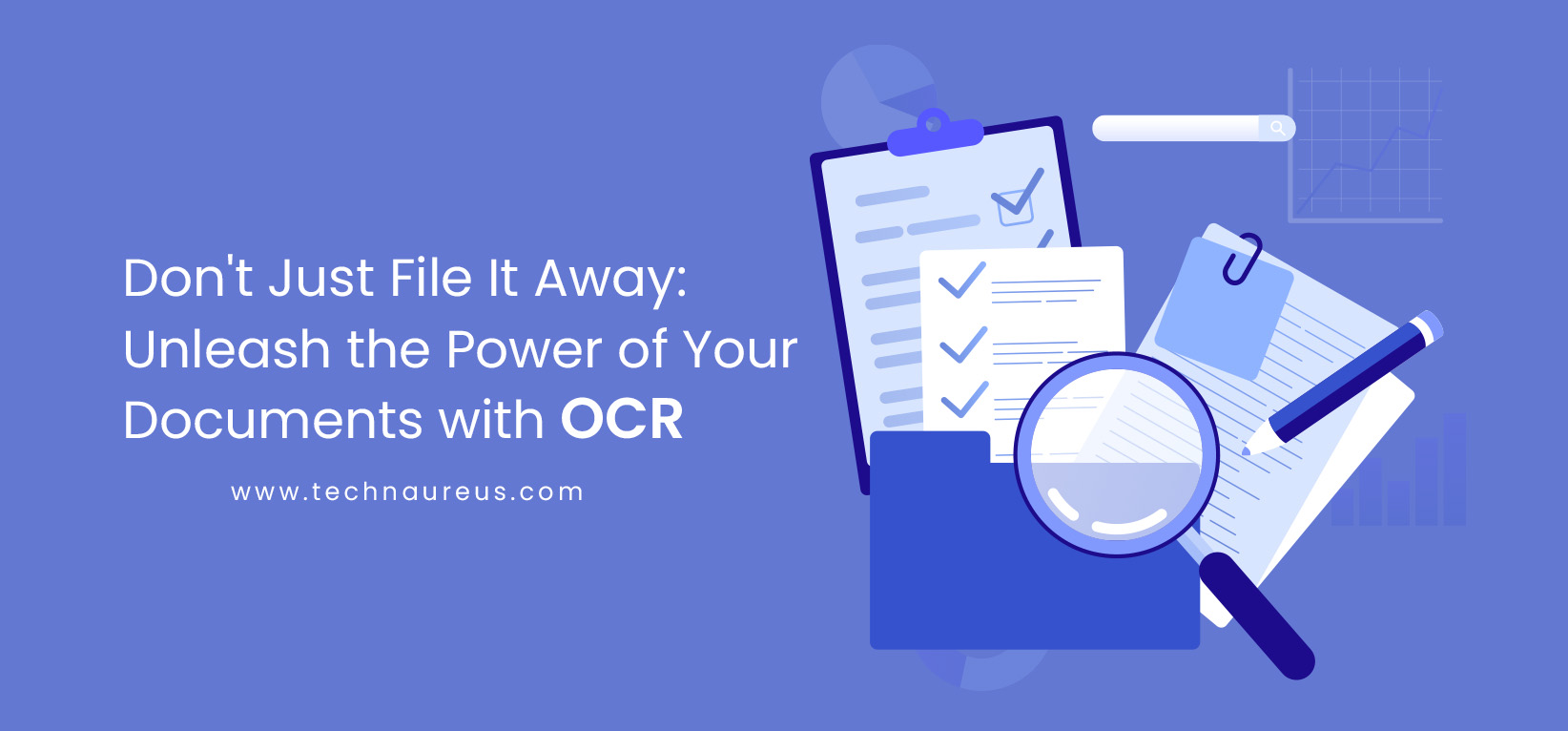Vasanthakumar SubramaniJune 7, 2024
In today's fast-paced digital world, managing documents efficiently is crucial for businesses and individuals alike. Traditional document filing systems, which rely heavily on paper and manual data entry, are becoming increasingly outdated. Enter Optical Character Recognition (OCR) technology – a game-changer in the realm of document management. In this blog, we will explore what OCR is, why it is essential, its benefits, how it helps specific industries, the future of OCR with AI, and best tools for OCR.
Optical Character Recognition (OCR) is a technology that converts different types of documents, such as scanned paper documents, PDF files, or images captured by a digital camera, into editable and searchable data. OCR software identifies the text within an image and transforms it into machine-readable text, allowing for digital storage, editing, and searchability.
Optical Character Recognition (OCR) technology offers a modern solution to the problems associated with traditional document filing. OCR converts different types of documents, such as scanned paper documents, PDF files, or images captured by a digital camera, into editable and searchable data.
Statistic: Businesses that implement OCR technology report an average of 40% increase in productivity. Companies can save up to 30% on operational costs by switching to digital document management systems powered by OCR. According to the World Health Organization, 285 million people are visually impaired, and OCR technology can greatly enhance their access to information.
Let's explore how OCR can change the game across various industries
In the healthcare industry, managing patient records is crucial yet challenging. Hospitals and clinics are inundated with paper-based documents, including medical histories, lab results, and prescriptions. OCR technology can convert these documents into digital formats, making them easily searchable and retrievable. This not only saves time but also enhances patient care by providing healthcare professionals with quick access to accurate patient information.Real-world example: The Mayo Clinic implemented OCR to digitize patient records, resulting in a 50% reduction in time spent searching for patient information and a 30% improvement in data accuracy.
The finance sector deals with an overwhelming number of invoices, receipts, and financial statements. Manual data entry is time-consuming and prone to errors. OCR automates the data extraction process, significantly speeding up invoice processing and reducing errors. This leads to faster payments and improved vendor relationships.Real-world example: A large multinational corporation adopted OCR for its accounts payable department and saw a 60% reduction in invoice processing time and a 40% decrease in late payment penalties.
AI is revolutionizing OCR, making it more accurate and versatile. Advanced AI algorithms can recognize handwriting, detect document layouts, and even understand context. This means OCR can now handle a broader range of documents with higher precision.
Example: Google's AI-powered OCR tool boasts an accuracy rate of over 95% and can process documents in multiple languages, including complex scripts like Chinese and Arabic.
OCR technology is a game-changer for document management. It transforms how businesses handle their paperwork, leading to improved efficiency, cost savings, and enhanced accessibility. As AI continues to advance, the capabilities of OCR will only grow, making it an indispensable tool for any organization looking to unlock the full potential of its documents. Don't just file it away; unleash the power of your documents with OCR today.

0